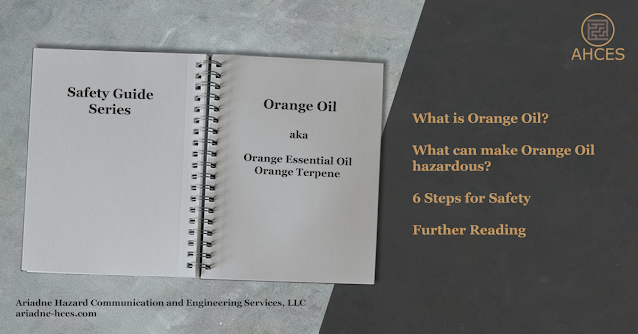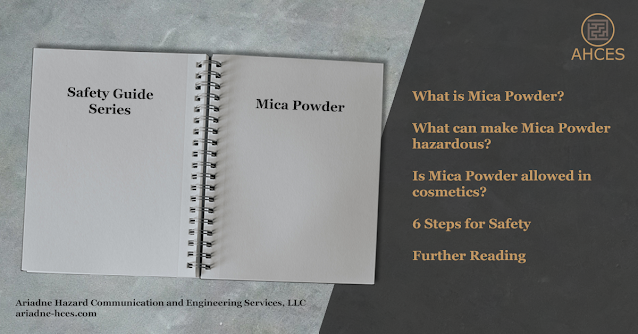Zinc Chromate Safety Guide
What is Zinc Chromate?
Zinc Chromate, also known as zinc(ii) chromate, zinc yellow, and buttercup yellow, is an inorganic compound. Zinc chromate has use as a corrosion resistance coating, particularly in marine applications.
Zinc chromate has the CAS Number 13530-65-9.
The CAS Number is used to identify zinc chromate as an ingredient on safety data sheets (SDS) and other safety documentation. When looking for zinc chromate as an ingredient in products like paints, look for the CAS Number in the composition table.
Notable Properties of Zinc Chromate
Zinc chromate is yellow in color, crystalline in structure, and tends to be in a powdered form when sold as a solid. It is naturally odorless.
What Makes Zinc Chromate Hazardous?
Zinc chromate is an irritant to both the skin and the respiratory system. Zinc chromate, along with other chromium compounds, can cause chromium sensitivity. This leads to a chromium allergy.
In addition to being an irritant and sensitizer, hexavalent chromium can cause severe respiratory damage, including lesions of the lungs, and is a known carcinogen linked to respiratory cancer.
The OSHA permissible exposure limit (PEL) is 0.005 mg/m3.
Zinc chromate is also an environmental hazard and is toxic to aquatic organisms.
Zinc Chromate Frequently Asked Questions
Is zinc chromate hexavalent?
The chrome atoms in zinc chromate are in the hexavalent state. This is the most toxic form of the chrome atom and is a known carcinogen.
OSHA has a webpage with further reading on the health effects of Hexavalent Chromium.
Does zinc chromate contain lead?
No, zinc chromate does not contain lead. The molecular formula of zinc chromate is ZnCrO4. Lead is indicated in molecular formulas with the symbol Pb.
Is zinc chromate banned?
In the United States, zinc chromate is not banned on a federal level. Exposure levels are regulated for workers through OSHA permissible exposure limits. Zinc chromate products, including zinc chromate primer, are available for purchase for consumers.
In the European Union, through the Restriction of Hazardous Substances Directive (RoHS), the use of hexavalent chrome is banned. This includes zinc chromate products.
6 Steps for Safety
Step 1: Read the Warnings
When working with a product for the first time, always read all the safety documents first. This includes safety data sheets, which should be provided by the manufacturer or importer of the zinc chromate product. There may also be an OSHA chemical label or a Consumer Protection label on the packaging of the zinc chromate product. These documents all contain important information on the hazards of the product and instructions on how to mitigate those hazards.
Different compositions in different products may cause additional hazards to be present beyond the properties of product with zinc chromate as the only active ingredient. Be sure to familiarize yourself with the differences between separate zinc chromate based products.
Step 2: Prepare Your Workspace
Creating a safe workspace, sometimes referred to as engineering control, is a key component of working safely with any potentially hazardous substance.
For example, if the zinc chromate product is in solid form and dusty, then the dust will have to be kept under control. A fan which would blow dust particles around should be avoided. A dust collection with a filter to capture dust is recommended.
Since zinc chromate is an environmentally hazardous substance, it is important that any spills can be kept contained and cleaned up without releasing the material into the environment. This includes having a spill cleanup kit available. If the zinc chromate is in a liquid solution, it is important that an absorbent barrier is used to prevent it from flowing outside.
Step 3: Gather Your PPE
- Respiratory Protection
- A dust mask meant for inorganic particles will protect the respiratory system from irritation from accidentally breathing in dust particles.
- A powered air-purifying respirator (PAPR) system may also be needed depending on the work being done, as this system does not reply on a seal, rather forcing filtered air into a mask and creating positive pressure that prevents particles from reaching the respiratory system.
- Eye Protection
- Safety goggles which form a protective seal around the eyes or a combination of safety glasses and a face shield can be used to prevent zinc chromate dust from reaching the eyes.
- Gloves
- Basic disposable gloves will prevent zinc chromate from touching the skin on the hands and causing irritation.
- Long Sleeves
- Long sleeves will prevent zinc chromate from touching the skin on the arms and causing irritation.
- Either a long-sleeved shirt, long-sleeved coat, or disposable sleeves will work.
- Launder any contaminated clothing separately to prevent cross-contamination and inform anyone laundering the clothing of the presence of zinc chromate so they can take any necessary precautions.
- Eye and Face Protection
- Either a face shield and safety glasses or a pair of safety goggles can prevent liquid zinc chromate from contacting the eyes in the event of a splash.
- Gloves
- Basic disposable gloves will prevent zinc chromate from touching the skin on the hands and causing irritation.
- Body Covering
- Rubberized or otherwise non-porous coverings are recommended to prevent a liquid splash from contacting the body.
Step 4: Clear Your Workspace
Having a clear workspace is an important part of safety. Clutter can cause accidents and can prevent you from noticing if something has spilled.
This is also a good time to double check any engineering controls are in proper working order, such as replacing the filters on a dust collector and checking that a spill kit is readily available.
If you are working in a shared space, make sure anyone around you can also remain safe when you are working with chrome green products. For those working at home, this can include family members and pets.
Step 5: Do The Work
If engineering controls and PPE are used properly working with chrome green can be done safely.
Particular care should be taken if work involves processes like sandblasting or other paint stripping techniques, which can generate small, aerosolized zinc chromate particles which can be easy to breathe in if proper precautions are not taken. This can lead to accidental exposure in the event of work being done on scrap or salvage that has not been properly identified as containing zinc chromate based paints.
If work cannot be completed in one sitting, be sure to properly seal any zinc chromate containers to prevent spills or accidental release when not in use.
Step 6: Clean Up
Dust generation should be avoided when cleaning up solid zinc chromate. Either a vacuum with a filter or a damp cleaning cloth can be used to pick up spilled any stray solid zinc chromate while preventing dust generation.
Be sure to dispose of any waste in accordance with local regulations. This is particularly important with liquid paint products. Many areas require any liquid paints be allowed to completely harden before disposal.
Further Reading
The National Library of Medicine has a PubChem Zinc Chromate Summary and Hazardous Substances Data Bank Entry on Zinc Chromate.
Check out the Safety Guide Series Hub for more safety guides.
Sources Cited
Bregnbak, D., Johansen, J. D., Jellesen, M. S., Zachariae, C., Menné, T., & Thyssen, J. P. (2015). Chromium allergy and dermatitis: prevalence and main findings. Contact dermatitis, 73(5), 261–280. https://doi.org/10.1111/cod.12436
National Center for Biotechnology Information (2024). PubChem Compound Summary for CID 26089, ZINC chromate. Retrieved January 24, 2024 from https://pubchem.ncbi.nlm.nih.gov/compound/ZINC-chromate.
National Center for Biotechnology Information (2024). PubChem Annotation Record for ZINC CHROMATE, Source: Hazardous Substances Data Bank (HSDB). Retrieved January 24, 2024 from https://pubchem.ncbi.nlm.nih.gov.
Original Posting Date: Jan. 24, 2024
Last Updated: Feb. 12, 2024





Comments
Post a Comment